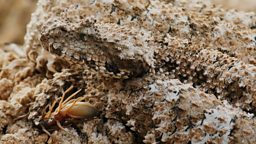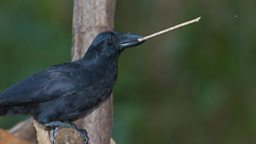Nature's top five best builders
Our top five countdown of the animal kingdom's masterbuilders.
5) Great apes - Hammock building brilliance

Non-human great apes - bonobos, chimpanzees, gorillas and orangutans - build what’s called a nest, essentially beds in trees, and no other primate does this.
These structures are almost as complex as a shelter that a human might make.
They create a comfortable sleeping environment by breaking a few supporting branches together and interweaving them in a way that allows them to have safe, secure sleep up in the canopy.
These structures are almost as complex as a shelter that a human might make. The apes know how the wood is going to break, and they understand how strong the bed needs to be. Interestingly, they even have a preference for building with certain tree species.
Key fact:
Nest building is learned behaviour, with young learning from their mothers how to build nests correctly. Getting good quality sleep is thought to have been a factor in the increased cognitive ability and better survival skills within the great apes, including our ancestors.
4) Male great bowerbird – Birds can build optical illusions
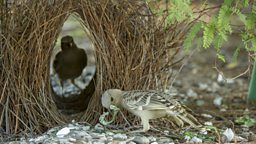
Many animals display to impress potential mates but few are known to build a structure specifically designed to enhance their performance.
There are 20 different species of bower bird and most build elaborate bowers solely for mating purposes.
The male great bowerbird’s bower is a twin-walled avenue-type bower approximately 1m long and 45 cm high.
Key fact:
The male great bower birds’ construction induces a visual illusion known as ‘forced perspective’ to the female, and the quality of this illusion is associated with mating success.
3) Termites – Enormous towers with hidden functions
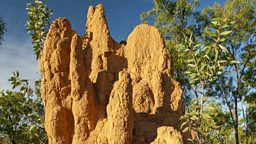
In proportion to their size the mounds that termites build can be up to 4 times higher than the world’s tallest skyscraper, the Burj Khalifa in Dubai.
In proportion to their size the mounds that termites build can be up to 4 times higher than the world’s tallest skyscraper.
Built with no plans, out of nothing but mud, water and their own excrement these structures not only help control nest temperature but are also thought to help replenish the nest’s oxygen supply and even manage water.
Key fact:
We’re already using the termite’s building brilliance in constructions of our own. The Eastgate Centre in Harare, Zimbabwe has no conventional air-conditioning or heating, yet its temperature stays regulated year round by using design methods inspired by the self-cooling mounds built by African termites!
2) Spiders – Silky skills

We all know spider silk is one of the strongest and toughest materials known to man.
Orb web spiders use up to 5 types of silk.
Less well-known is the spider’s ability to make several different types of silk, each for a specific use.
By cleverly combining these materials spiders are able to construct incredibly efficient webs.
Key fact:
Orb web spiders use up to 5 types of silk. The key material, ‘capture silk’, has built-in shock absorbers to ensure prey doesn’t bounce out of the web.
1) Beavers – Beavers build big but they can also build clever
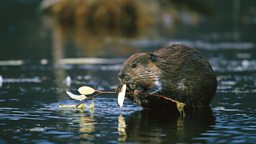
The world’s largest beaver dam in Canada is 850m long and visible from space.
Beavers often combine several such as wood, stone and mud.
These specialist structural engineers use many techniques similar to human dam builders to construct huge dams strong enough to hold back millions of gallons of water.
Key fact:
Their dams might look randomly thrown together but they’re not. Rather than build with just one material, beavers often combine several such as wood, stone and mud. By choosing to build with multiple materials scientists have proven their dams to be much stronger than if they were built using just one
